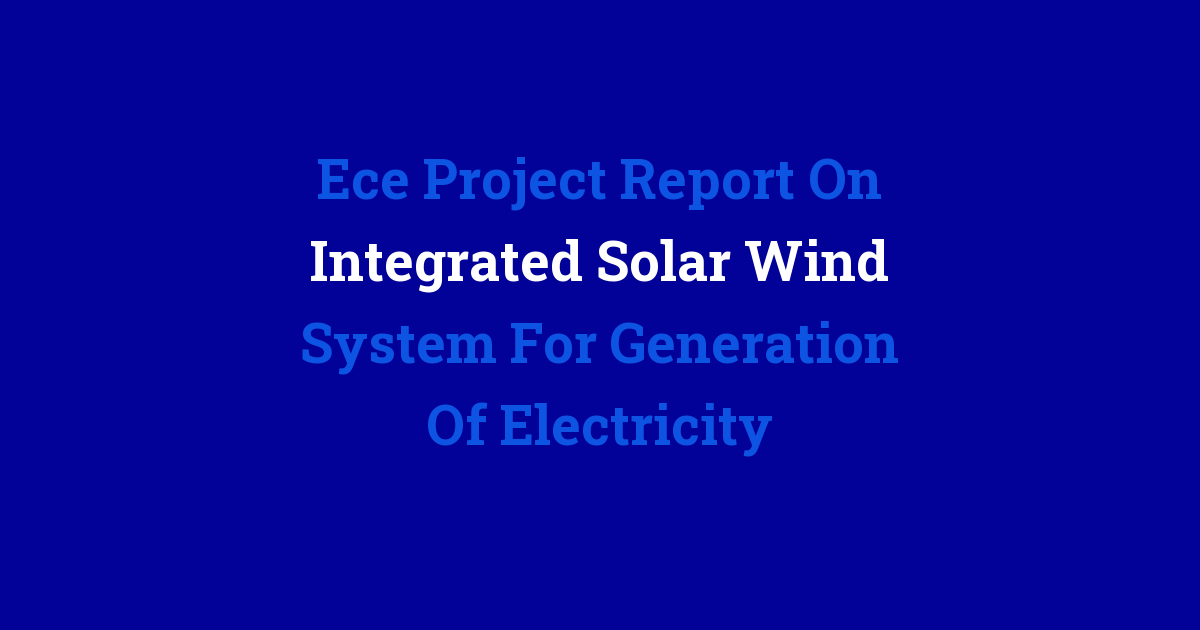The report details an ece project that explores the integration of solar and wind systems for the generation of electricity.
Introduction
As a student pursuing a Bachelor of Technology in Electronics and Communication Engineering (ECE) in India, I have been working on a project report on an integrated solar wind system for the generation of electricity. This project aims to address the increasing demand for sustainable and renewable energy sources to mitigate the effects of climate change and reduce our reliance on fossil fuels.
Problem Statement
The current energy systems primarily rely on non-renewable sources such as coal, oil, and natural gas, which contribute to environmental degradation and global warming. To combat these issues, there is a need for the deployment of alternative energy systems that can harness renewable sources such as solar and wind power efficiently.
Existing System
The existing energy systems are largely based on centralized power plants that run on fossil fuels. While these systems have been effective in meeting the energy demands, they come with significant drawbacks. The reliance on non-renewable sources leads to increased greenhouse gas emissions, air pollution, and resource depletion.
Disadvantages
- High greenhouse gas emissions
- Air pollution
- Resource depletion
- Dependence on non-renewable sources
Proposed System
The proposed integrated solar wind system aims to harness the power of renewable sources such as solar and wind energy to generate electricity. By combining the two technologies, we can maximize energy production and improve the overall efficiency of the system.
Advantages
- Reduced greenhouse gas emissions
- Clean energy production
- Resource conservation
- Diversification of energy sources
Features
The integrated solar wind system will consist of solar panels and wind turbines that work together to capture and convert renewable energy into electricity. The system will be equipped with smart technology to optimize energy production and distribution efficiently.
Solar Panels
The solar panels will absorb sunlight and convert it into electricity through the photovoltaic effect. They will be installed on rooftops or open grounds to maximize solar exposure and generate power throughout the day.
Wind Turbines
The wind turbines will harness the kinetic energy of the wind to rotate the blades and generate electricity. They will be strategically placed in areas with high wind speeds to ensure optimal energy production.
Smart Technology
The integrated system will be equipped with sensors, controllers, and monitoring devices to track energy production, consumption, and storage. This smart technology will enable real-time data analysis and energy management for maximum efficiency.
Conclusion
In conclusion, the integrated solar wind system offers a sustainable solution to meet the growing energy demands while reducing the impact on the environment. By harnessing the power of renewable sources such as solar and wind energy, we can create a more sustainable and cleaner future for generations to come.

